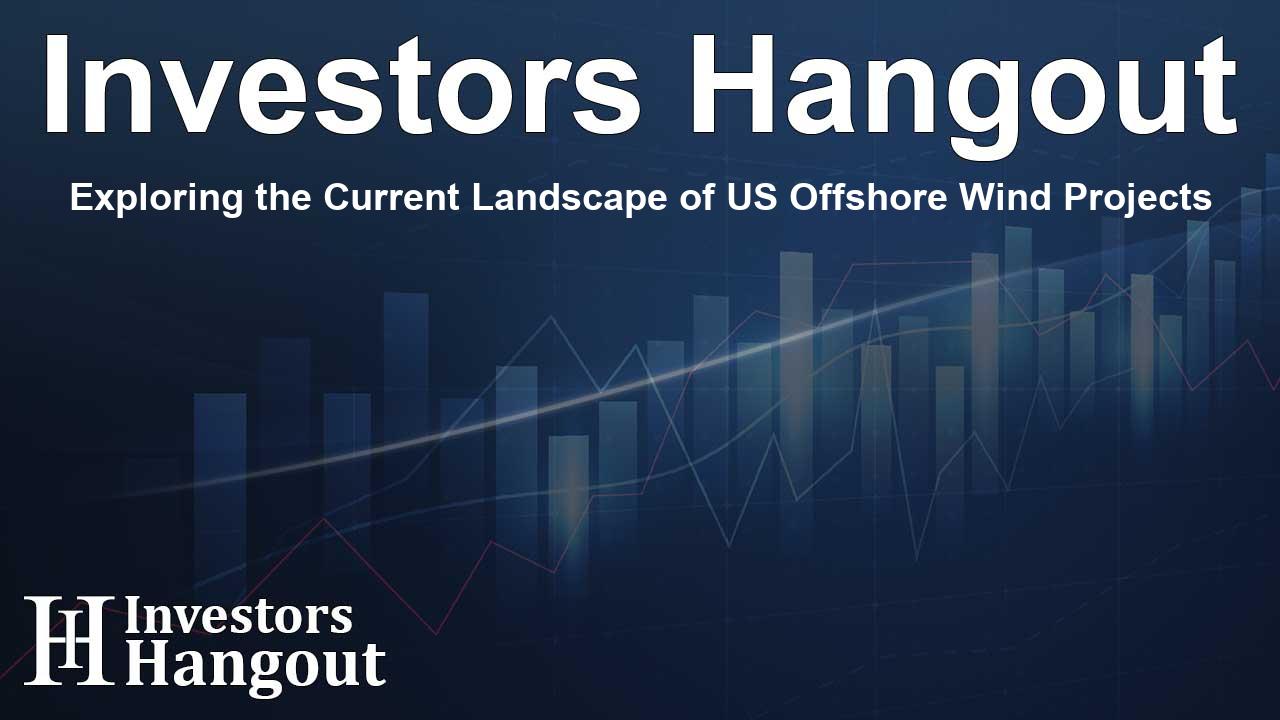Exploring the Current Landscape of US Offshore Wind Projects

Introduction to Offshore Wind Energy in the U.S.
The landscape of offshore wind energy in the United States is evolving rapidly, marked by both challenges and opportunities. The recent suspension of new federal offshore wind leasing, announced by the sitting president, raises questions about the future of renewable energy development. Despite these challenges, companies and states continue to push forward, recognizing the importance of clean energy sources.
Current Status of Offshore Wind Farms
As it stands, four offshore wind projects are currently operational across the country, one of which faced setbacks in 2024 due to a significant failure in the turbine infrastructure. Nevertheless, the need for clean energy remains paramount, driving investments and resource deployment in the sector.
Projects in Operation
Among the existing projects, Block Island Wind Farm in Rhode Island stands out as a pioneer, with 29 MW of capacity. Coastal Virginia Offshore Wind Pilot followed, contributing an additional 12 MW to the grid. The South Fork project, a collaboration involving Orsted and Global Infrastructure Partners, plans to generate 132 MW, while Vineyard Wind 1 is set to add an impressive 806 MW to the energy mix once operational.
Projects Under Construction
As excitement builds around renewable energy initiatives, several projects are currently under construction. Revolution Wind, a collaborative effort by Orsted and Global Infrastructure Partners, is expected to yield 704 MW by 2026. Meanwhile, Coastal Virginia Offshore Wind (Commercial) marks a significant development by Dominion and Stonepeak, targeting a staggering 2,587 MW. Other projects like Empire Wind 1 and Sunrise Wind also demonstrate the increasing scale and ambition of offshore wind energy in the U.S.
Investment Challenges in Offshore Wind Initiatives
Despite the promising outlook, the industry is facing significant financial hurdles. Many offshore wind companies, including major players like Orsted, recently reported substantial financial write-offs and impairments due to soaring construction costs and interest rates, coupled with supply chain disruptions. These challenges necessitate a critical review of project viability in the current economic environment.
State-Level Commitment to Clean Energy
Even amidst these challenges, state leadership remains committed to advancing clean energy initiatives. In states like New Jersey, there is a strong focus on exploring every possible avenue to ensure environmental protection and economic growth. The governor emphasizes the importance of energy independence and job creation, reflecting a broader trend among states to harness renewable energy potential.
Future Development Plans for Offshore Wind
The future of offshore wind energy in the U.S. looks bright, with numerous projects in the advanced stages of development. Companies are actively planning large-scale initiatives that could reshape the energy landscape, engage communities, and create thousands of jobs.
Emerging Projects
Looking ahead, New England Wind 1 is under development, targeting 791 MW, while SouthCoast Wind 1 is projected to bring in 1,287 MW. Community Offshore Wind aims to integrate resources across New York and New Jersey with a target of 1,314 MW. These ambitious projects represent a significant step towards bolstering the clean energy infrastructure in the U.S., illustrating a collective commitment to embracing renewable energy.
Conclusion: The Path Forward for Offshore Wind
As the U.S. navigates the complexities of energy policy and market dynamics, the commitment to offshore wind remains vital. Collaborations among state leaders, industry stakeholders, and communities are essential in overcoming obstacles and harnessing the full potential of renewable energy sources. The investments being made today will have a lasting impact on the sustainable energy landscape, with far-reaching implications for future generations.
Frequently Asked Questions
What is the current status of offshore wind energy in the U.S.?
Offshore wind energy is in a dynamic phase, with several operational projects and more under construction, despite recent challenges.
How many offshore wind projects are currently operational?
There are four offshore wind projects currently operational in the U.S., contributing significant capacity to the energy grid.
What challenges do offshore wind companies face today?
Offshore wind companies are dealing with rising construction costs, higher interest rates, and supply chain issues, which have led to financial write-offs.
How are states responding to offshore wind challenges?
States are committed to advancing clean energy by exploring various strategies to protect the environment and boost economic growth through renewable initiatives.
What does the future look like for offshore wind development?
The future for offshore wind development appears promising, with numerous large-scale projects planned that aim to significantly enhance renewable energy capacity.
About Investors Hangout
Investors Hangout is a leading online stock forum for financial discussion and learning, offering a wide range of free tools and resources. It draws in traders of all levels, who exchange market knowledge, investigate trading tactics, and keep an eye on industry developments in real time. Featuring financial articles, stock message boards, quotes, charts, company profiles, and live news updates. Through cooperative learning and a wealth of informational resources, it helps users from novices creating their first portfolios to experts honing their techniques. Join Investors Hangout today: https://investorshangout.com/
Disclaimer: The content of this article is solely for general informational purposes only; it does not represent legal, financial, or investment advice. Investors Hangout does not offer financial advice; the author is not a licensed financial advisor. Consult a qualified advisor before making any financial or investment decisions based on this article. The author's interpretation of publicly available data presented here; as a result, they should not be taken as advice to purchase, sell, or hold any securities mentioned or any other investments. If any of the material offered here is inaccurate, please contact us for corrections.